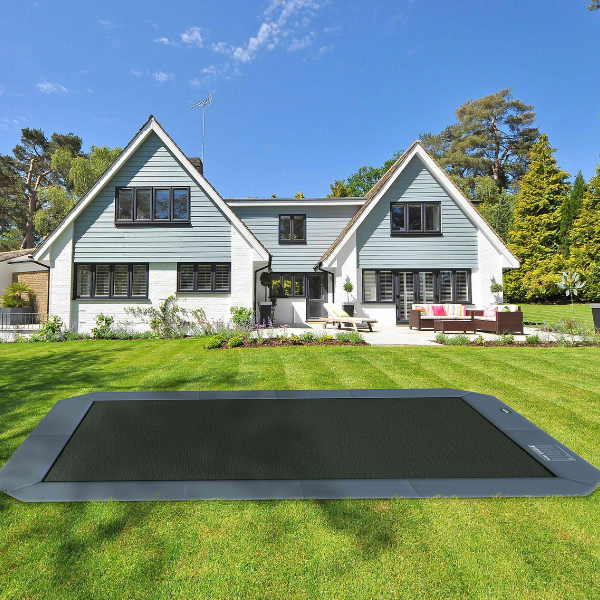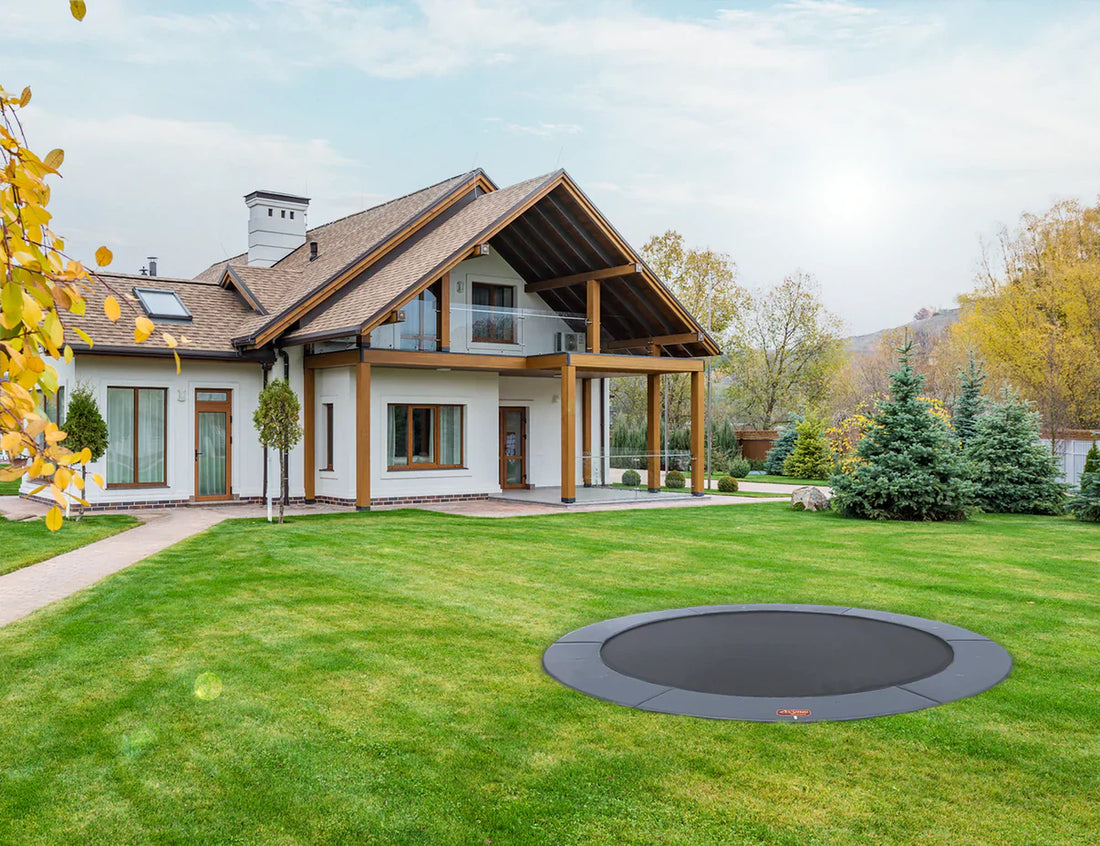If you’ve been fortunate enough to have used one, you know how much kids and families love their inground trampolines. But what if you bought a regular trampoline and then decided later that you wanted it installed under the ground. Let’s discuss some pros and cons to doing just that.
Pros:
- Easier
- Saves money in the short term
- Fast
Cons:
- Wear and tear on the frame
- Safety
- Costs more over time
Why Everyone Loves In-Ground Trampolines
In-ground trampolines are aesthetically appealing because they are buried in the ground, they don’t place a giant metal frame right in your line of sight through your yard. Because they have no exposed springs or hard edges, they are also significantly safer which is peace of mind for parents. The unobtrusive design coupled with the enhanced safety is a double win for parents.
Above-Ground vs. In-Ground Trampolines
The difference between above ground and in-ground trampolines is somewhat self explanatory. One is made for installation, you guessed it, above ground. This means the frame is made a certain way and the installation does not include certain additional parts that you will need for an inground install. In contrast, inground trampolines are made for installing in the ground and come with accessories and parts for that.
Why Not to Bury a Standard Trampoline
Let’s go over some reasons why we don’t recommend burying an above ground trampoline model. For one, these models are not made with a material that is meant for the constant pressure and exposure to moisture that they will likely encounter when installed in-ground. Over time, these forces can cause the frame to rust and warp which can affect the bounce and safety of the trampoline.
Safety Concerns with Sinking an Above-Ground Trampoline
Installing an above-ground trampoline like an in-ground may lead to frame instability and improper tensioning. Drainage can also be an issue, with the potential for water to pool and the trampoline, leading to unsafe jumping conditions and accelerating wear and tear.
Ventilation and Drainage Considerations
Airflow through the jumping mat (or lack thereof) can also cause problems. In addition to causing safety issues if water gets onto the jumping mat while jumping, water pooling can also trap moisture which can lead to mold and mildew growing under the trampoline.
Secure Frames for Different Uses
Securing the frame for the type of install is important. For above ground trampolines, keeping them secure so they don’t move during storms may be a factor, depending on weather in your area. For an inground install, this means the frame must be made of reinforced materials designed to withstand ground pressure and moist conditions. For this reason, installing an above ground trampoline in the ground can cause serious risk to jumpers by compromising the integrity of the frame. .
Inground Models May Cost More, But It’s Worth It
Yes, an inground trampoline may cost more. The stronger frame material, retaining wall included in the kit, and the labor intensive install process are a few reasons why this is the case. But the increased property value you get from this unique install, and considering that inground brands like Avyna offer a lifetime warranty on their frames, means that over time the inground install pays for itself.
Installation Process and Challenges
As we’ve touched on, the inground installation process is more involved than for above ground. The steps include picking a location, digging the hole, proper ventilation, retaining walls, and often a drainage system. Professional installation service is a big help here, as they have the experience to make all these steps more efficiently and with attention to correct setup.
Choosing the Best Trampoline for Your Family
There is not one “best” trampoline for every family. It varies based on your family size, yard, kid’s ages, and what you want out of the trampoline. The size, placement and your budget will be unique. We can help determine the right trampoline for your needs. But for all of the reasons above, we highly recommend that you choose a trampoline that is made for inground installation.
So can you put a normal above ground trampoline in the ground? We don’t recommend it. If you already have an above ground model, we recommend that you get a new one for inground. Opting for one made for inground is the best way to ensure safety and protection of your investment long term.
Are you ready to transform your backyard into the ultimate hangout zone? If so, give us a call today to get started. Our team is ready to help you find the perfect inground trampoline for you and a local installer that will have it ready for jumping in no time.

